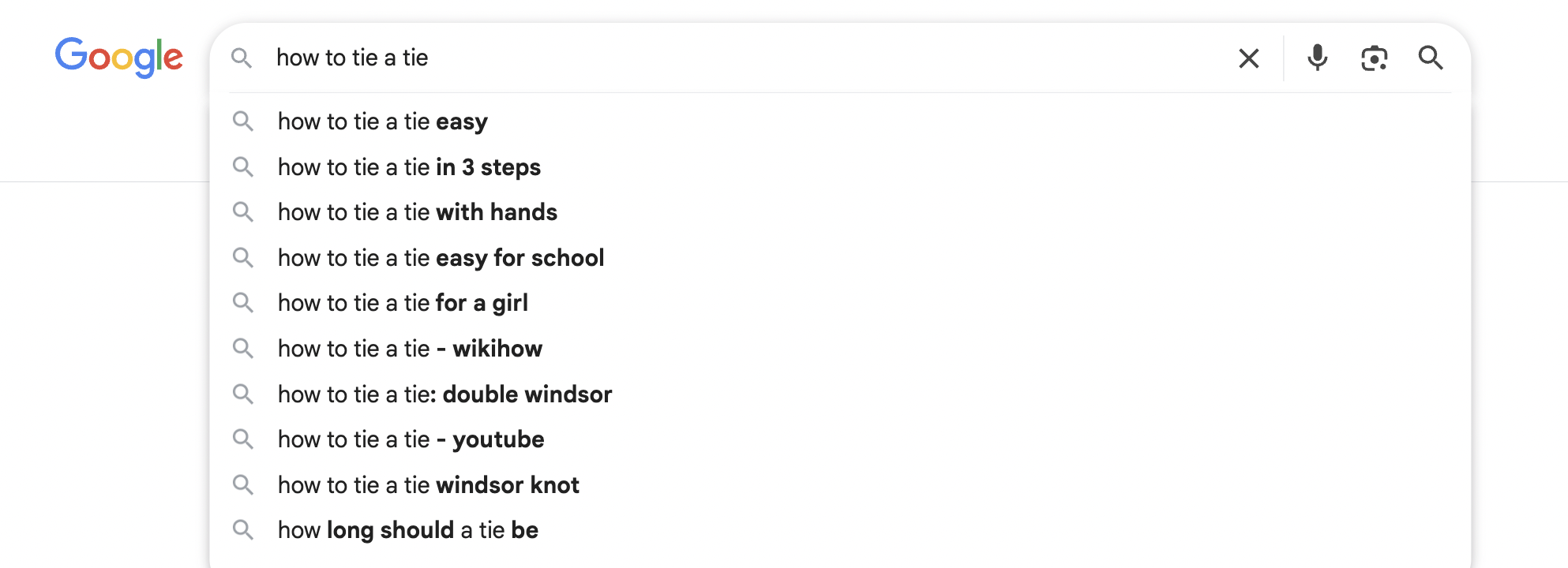Most blog posts do not bring in steady traffic over time. They might perform well for a week or two, but then quickly disappear, which leaves marketers frustrated.
The main issue is not always poor writing. The real problem is that the content is not built to last.
Evergreen content solves this problem. Such content continues to provide value year after year. It covers topics that remain relevant, and it answers questions people will always search for.
When you combine evergreen content with a keyword research tool, you get a clear roadmap for long-term SEO success instead of relying on luck or trends.
Evergreen Content and Why It Matters for SEO
Evergreen content is content that stays useful and relevant for long periods of time.
Examples include tutorials, FAQs, and guides. These topics are searched today, and they will still be searched next year.
Something like “how to tie a tie” will always have demand, while “new summer fashion 2023” will not.

Search engines reward this type of content. Pages that remain valuable continue to rank because they satisfy user needs.
Over time, they attract backlinks, which boost visibility, and evergreen content does not require constant replacement, making it far more efficient for SEO.
Why Guessing at Keywords Usually Backfires
Many businesses guess what their audience searches for, but assumptions rarely match reality.
Mistakes from this guesswork often include:
- Targeting keywords with little or no search volume
- Going after terms with very high competition
- Missing search intent, which makes users leave quickly
With proper keyword research, you can target keywords with enough volume, realistic competition, and proper intent. This ensures your content is more likely to perform rather than fail silently.
How the Right Tools Make Evergreen Content Stronger
A keyword research tool provides more than just ideas. It delivers actual insights into what users search for and how competitive those searches are.
It can also highlight related terms, which expand the reach of your content.
Key benefits of these tools include:
- Showing how often a keyword is searched
- Highlighting difficulty levels for ranking
- Suggesting related terms for broader coverage
- Tracking whether search demand is steady or falling
For evergreen strategies, this is very important. You want topics that will hold demand over time, and tools like this filter out seasonal trends so your content can stay relevant longer.
Understanding Search Intent to Keep Content Useful
Search intent is the reason behind a query. It may be informational, navigational, or transactional.
Ignoring intent leads to poor results because the content does not answer what people want.
Keyword tools show intent by displaying related searches and questions.
For example, if you search for “best running shoes,” you might also see “running shoes for beginners” or “lightweight running shoes.”
That reveals the intent is comparison and recommendation, not just definitions. Aligning with intent makes your evergreen content more valuable and longer-lasting.
Building Keyword Clusters for Broader Reach
Targeting just one keyword limits your reach. Keyword clustering allows you to group related terms and cover them in one article or across linked content.
Benefits of keyword clusters include:
- Demonstrating to search engines that you cover a topic deeply
- Increasing your chances of ranking higher for multiple searches
- Offering readers more complete answers to related questions
Both paid and free keyword research tools simplify this by providing related terms around the seed keyword. Organizing and using these terms creates stronger evergreen pages that rank across many queries.
Tracking Keyword Trends to Keep Content Fresh
Evergreen does not mean it does not have to be updated over time. Content still needs updates to match shifts in search demands. If keywords lose interest, your content can slowly lose its value.
A keyword tool can track search volume changes. If one term falls while another rises, you can adjust your page to include new terms. Doing this prevents decay and keeps your content evergreen.
Regular trend checks allow you to refresh your content before it loses visibility. This helps maintain the long-term traffic that evergreen strategies are built for.
Competitor Keyword Analysis for Smart Opportunities
Looking at competitors shows where gaps exist. A keyword tool lets you see what they rank for and how much traffic they bring.
Competitor analysis helps by:
- Identifying missed keywords that you can target
- Spotting weak competitor content that you can improve
- Highlighting areas that you should avoid
The goal is not copying. The goal is to fill gaps and do better. Evergreen content built from competitor insights often performs well because it covers what others overlooked.
Evergreen content continues to work long after publishing. It brings steady traffic, builds trust, and strengthens SEO authority. But success depends on making smart choices.
Keyword research tools provide the data needed to make those choices. They reveal which topics are worth covering, how difficult they are, what intent they carry, and how demand changes over time. They also expose gaps that competitors missed.
So instead of chasing quick wins, focus on evergreen pieces supported by keyword research. That is the approach that drives long-term SEO success.









